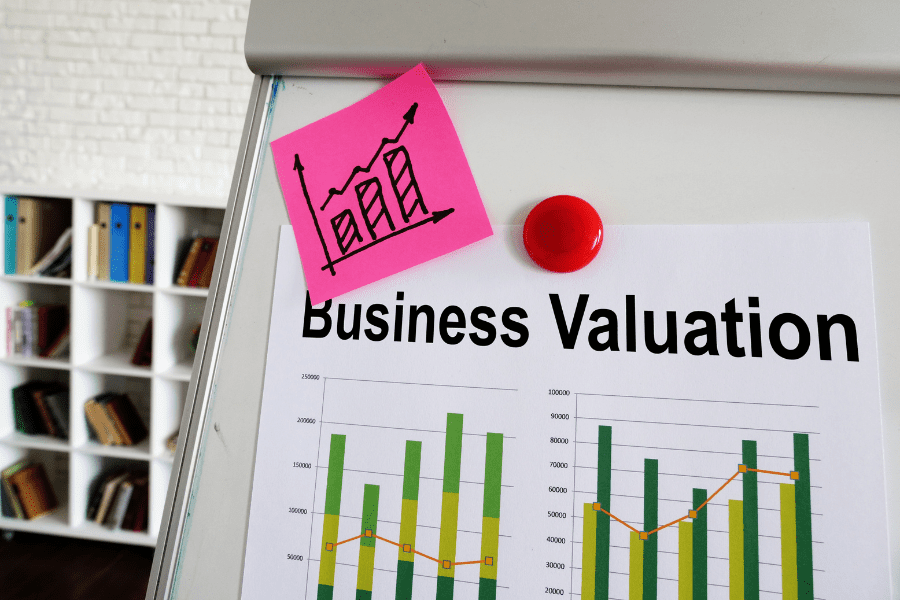Whether you’re selling up or looking for investment, a business valuation will help you to understand how much your organisation is worth.
However, working out your business’s true value can be a deceptively complicated process with various moving parts. That’s why using a clear, accurate methodology is essential for all business valuations.
In this article, we’ll provide a broad overview of why valuations are important, how they are done and what you can expect.
Why value a business?
There are various scenarios, both good and bad, in which you might need to value your business. These might include:
- selling your shares to an employee ownership trust (EOT)
- selling your shares in order to retire
- seeking investment
- leaving your business because you’re not happy with your fellow shareholders
- going through a divorce: you might need to value your business to calculate the value of your combined assets.
How to value a business: the two methods for business valuations
There are two main methods you could use to value a business: the income approach and the market approach.
Income approach
The income approach, also known as the discounted cashflow (DCF) approach, is based on the theory that the value of an asset is equal to all future cashflows derived from the asset.
In other words, this method uses predictions about your business’s future cashflow in order to calculate its current value.
As part of the income approach for valuations, you need to use a discount rate, which is a figure used to adjust future cashflows to their present value. It accounts for two main factors:
- Risk of the investment: Investing always comes with some level of risk. The higher the risk of the investment, the higher the discount rate will be. This is because an investor will require a higher rate of return to compensate for taking on more risk.
- Time value of money: This is the concept that money available at the present time is worth more than the same amount in the future, because of its potential earning capacity.
One measure you can use as your discount rate for valuations is the weighted average cost of capital (WACC), which considers the different rates of returns from equity and debt financing to calculate an average return.
Finally, it’s important to have robust forecasts when preparing a discounted cashflow valuation – without accurate figures, your valuation could easily become skewed.
Market approach
By contrast, the market approach is based on historical data. This is typically done using the following formula:
A x B = C
A = Underlying earnings
B = Earnings multiple
C = Enterprise value of the business
For example, if a business’s underlying earnings are £100,000 and the earnings multiple is 5, then the enterprise value is £500,000.
Starting with ‘A’, the underlying earnings of a business are typically calculated using earnings before interest, tax, depreciation, and amortisation (EBITDA).
EBITDA is a popular metric to understand how a business’s core operations are performing, without being affected by how it’s financed, or any short-term or external problems.
Moving on to the ‘B’ part of the calculation, there are two ways to get the earnings multiple:
- looking at other earnings multiples from comparable transactions in the same sectors in the last 3-5 years
- using the earnings multiples of companies operating in the same sector which are listed on stock exchanges. (These should typically be discounted for SMEs and startups.)
Finally, we have ‘C’: the enterprise value of a business. You can reach this by following the calculation above.
The enterprise value isn’t the only figure you’ll need to know, though: you’ll also need to work out the equity value to find out the amount that shareholders would actually receive.
Another important distinction for business owners is the difference between ‘pre-money’ and ‘post-money’ valuations. If you want to know more about these and how they apply to your business, we can talk you through it.
Which business valuation approach is better?
With these two methods in mind, you might be wondering which one is the most accurate to apply when valuing your business.
In reality, neither one is better than the other. You might argue that the market approach for valuations is more accurate because it uses historical data rather than forecasts – but it doesn’t factor in any growth rate.
Generally speaking, a good option is to use both approaches to calculate an average value of the business, but this all depends on the information you have to hand.
What to expect from your business valuation
At Specialist Accounting Solutions, we carry out business valuations in close collaboration with our clients, meeting with them to establish the methodology we’ve explained above.
We then draw up a valuation report detailing our approach, findings and conclusions, and the comprehensive research that underpins them. Typically, the valuation process takes about four weeks altogether, but after it, you’ll have valuable and actionable data.
This Guide to Business Valuations is one of many resources on our website. To learn about this topic in even more detail, take a look at our ‘Crash course in business valuations’ webinar – or get in touch with our team for a free consultation.
Use of this information is for reference only. Specialist Accounting Solutions Ltd accepts no liability for any errors therein or any losses or damages arising from it.







